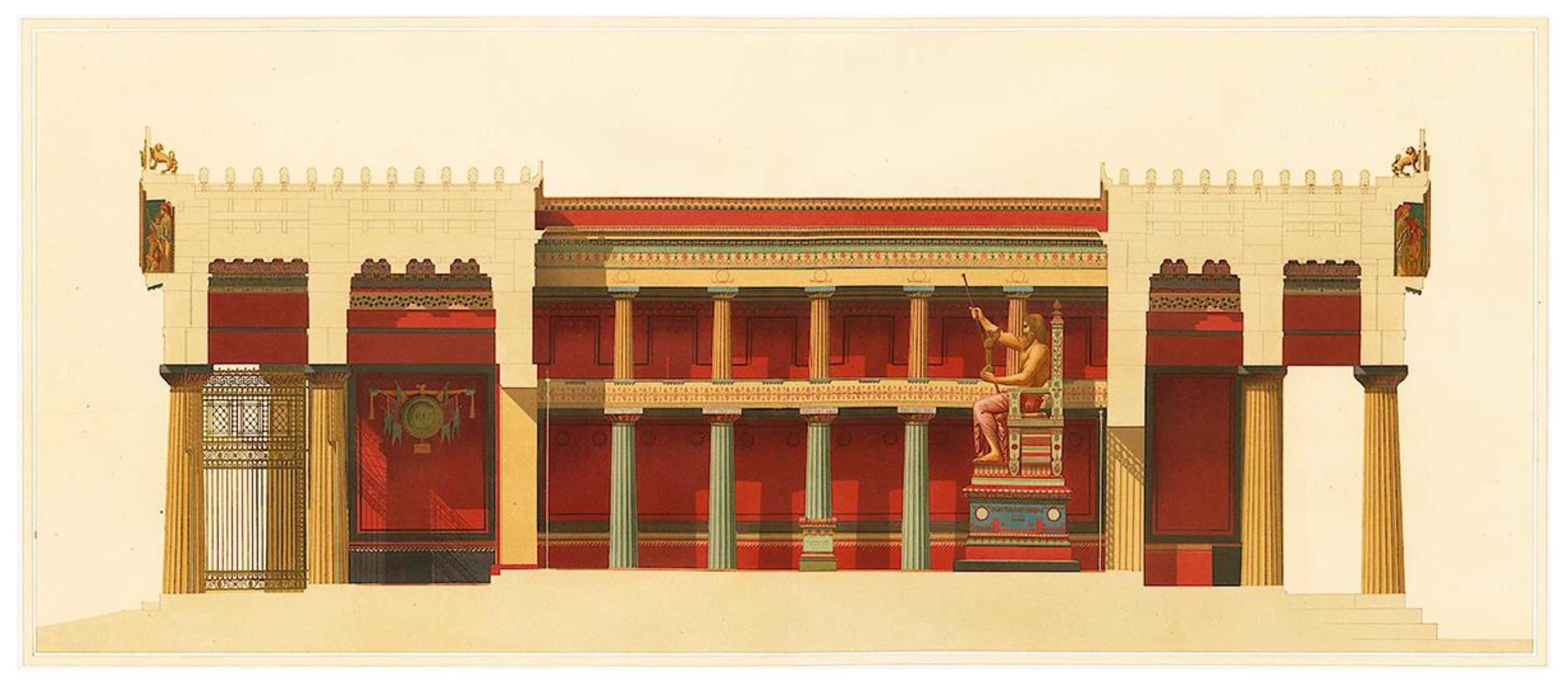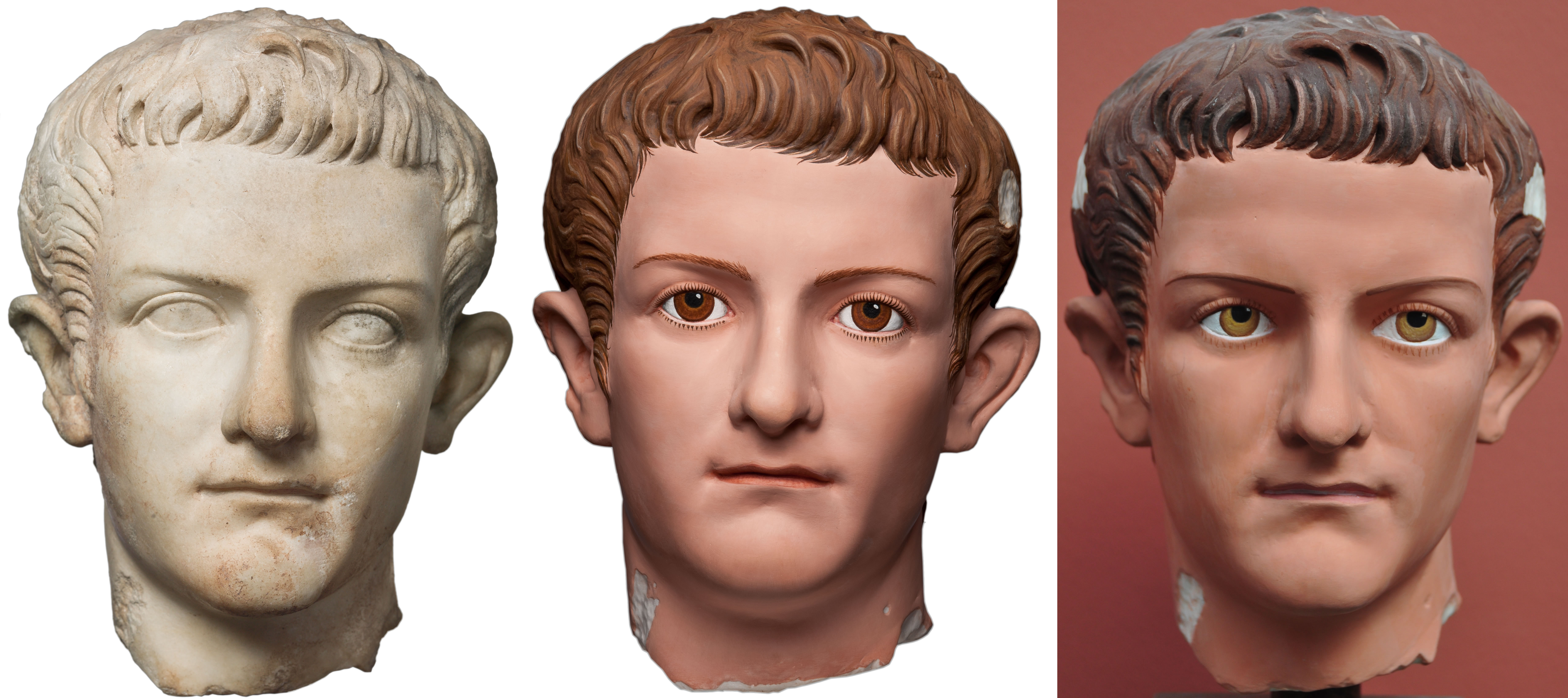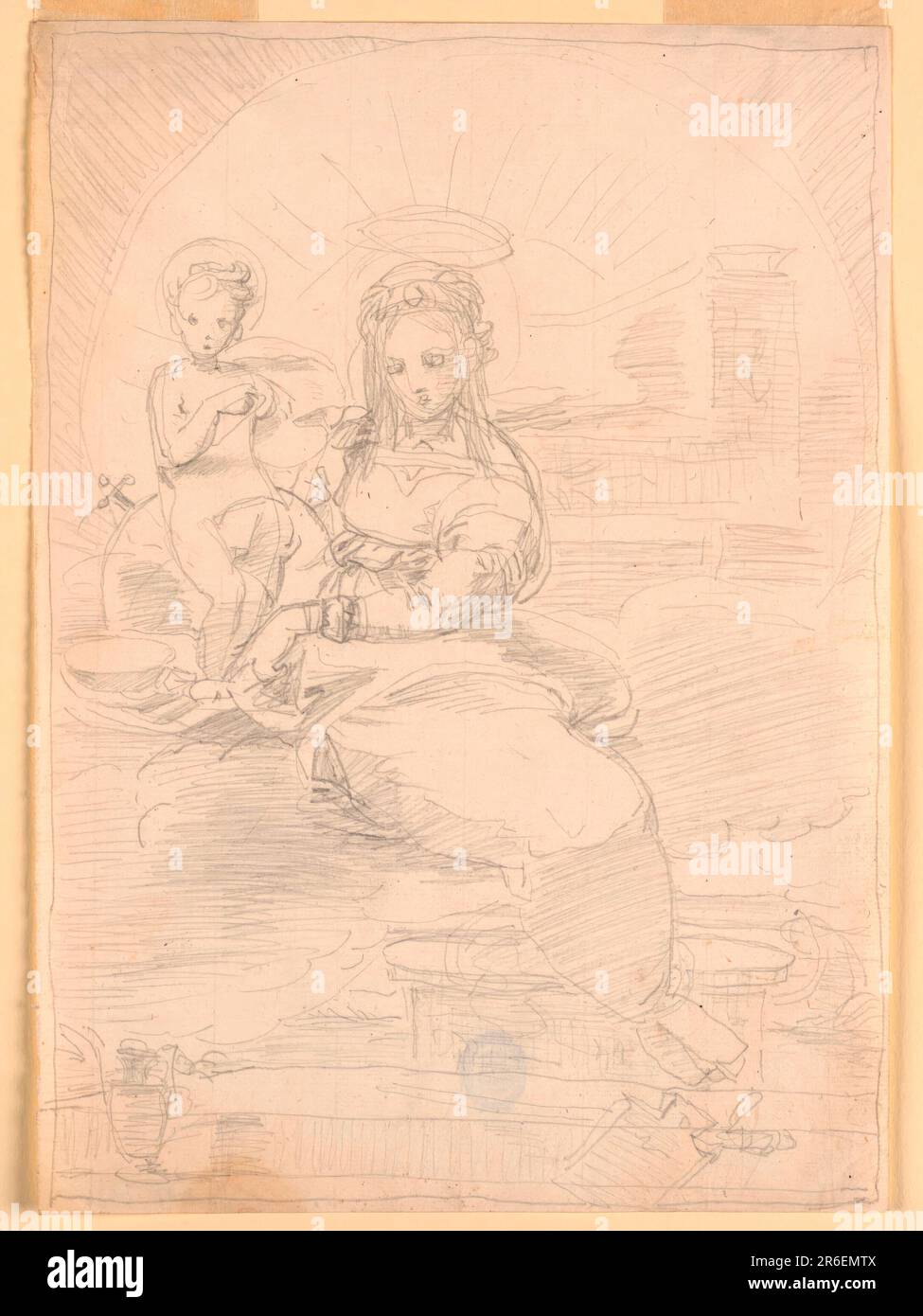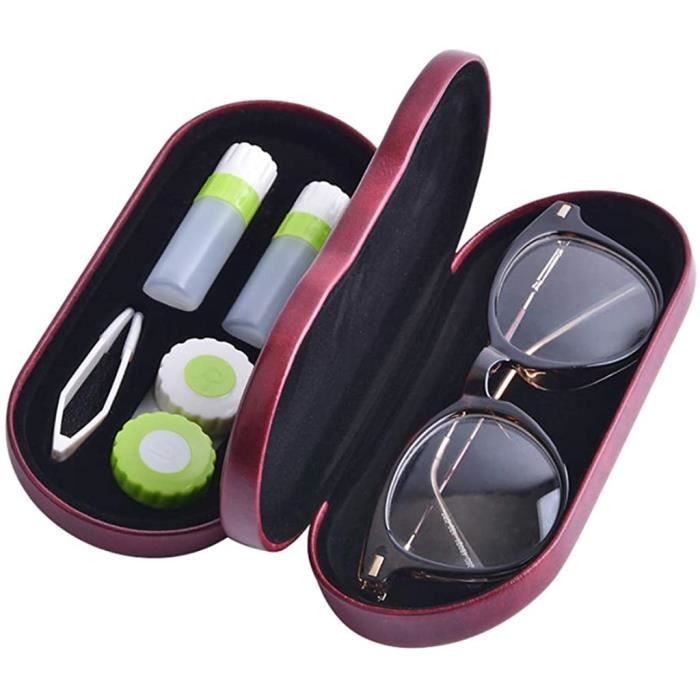
Polychromy, architectural, Greek and Roman
The polychromy of Greek and Etrusco-Roman architecture comprises the chromatic effects and surface treatments of exterior façades and roofs, as well as interior floors, walls, and ceilings. Colour and/or contrasts of light and shadow are the basis for all architectural ornamentation. The practice is characterized by a large variety of materials and techniques, which draw from different genres of the visual arts such as stone, plaster and stucco working, toreutics, tessellation, sculpture, panel painting, terracotta, and glass making. The treatment of architectural surfaces is thus intimately connected to changes in both construction knowledge and building economies, while their visual effects depend on changing architectural forms and designs. Both texts and archaeological remains underline the importance of colour and material as an integral part of ancient architectural design; they play a key role for the sensory and atmospheric experience of architecture and could influence its symbolic meaning. Despite strong regional traditions and a general lack of standardization, a few overall developments can be pinpointed: a triple colour scheme of dark (black, blue), light (white, cream), and red hues dominated both Archaic Greek and Etrusco-Italic architectural polychromy; its chromatic polarity became fundamental for the Greek Doric order and, as a basic combination, it remained a recurring motif of architectural surfaces into the Roman Imperial periods. During the Greek Classical period, green, yellow, and increasingly, gilding joined the basic colour palette. Late Classical/Hellenistic innovations included illusionistic painting techniques, intermediality (the imitation of one material by means of another), as well as the increase of light and shadow effects. While variation (Greek poikilia) of both colours and materials was a guiding principle, it seems that there were also occasional reductions of polychrome accentuations on exteriors. Etrusco-Italic and Roman architecture participated in many of these developments, despite its own materiality and designs. On Italic soil, some of the Hellenistic concepts were even brought to entirely new levels of application, especially the achievement of colour effects through an antithetical combination of material colours (coloured marbles, metals), which became a veritable signature of Roman architecture. The concept of variation (Latin varietas) remained fundamentally important, especially for interiors; mono- or bichromatisms were also advanced, along with stark light and shadow contrasts achieved through surface carving and texturing. Rather than specific colour combinations, Late Antique and early Byzantine architecture favored general polychromacity and, in particular, surfaces with light-bearing qualities to create effects of glitter, brilliance, and reflectance; they were seen as a quality of divinity.

Gods in Color: Polychromy in the Ancient World at the Legion of Honor - By Claudya

Heritage, Free Full-Text

Polychromy

Reconstruction” of the polychromy of ancient sculpture: a necessary evil?

New exhibition of ancient sculpture in technicolor – The History Blog

Polychromy, architectural, Greek and Roman
Polychromy of Roman Marble Sculpture, Essay, The Metropolitan Museum of Art

Polychromy, architectural, Greek and Roman
Were all the temples and statues of Greece originally also in white colour, or were they colourful? - Quora

Contextual Post – Architectural Styles – p2444780

Greek statues, now in their original colors : NPR

PDF) “Polychromy, architectural, Greek and Roman.” In Oxford Research Encyclopedia of Classics. Oxford University Press. March 2019.

Color in Architecture: Part 5 and 6, 2016-01-13

Polychromy, architectural, Greek and Roman

Reconstruction” of the polychromy of ancient sculpture: a necessary evil?








